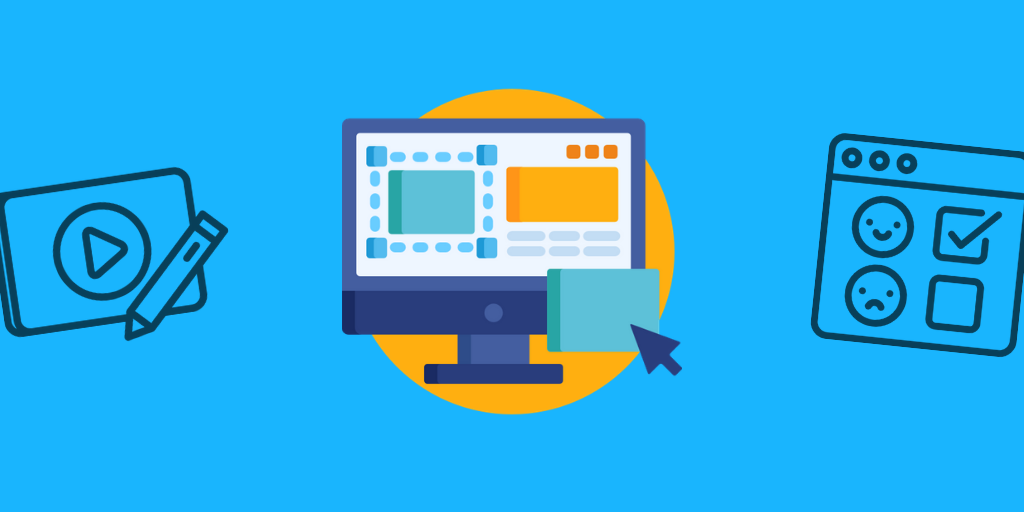With a rising number of media platforms in 2022, efficient media planning has become more crucial than ever. No matter if you hire advertising agencies or implement the media campaign on your own, you need to know your target audience inside-out.
Customized targeting across different media platforms will help you make the most of your marketing budget. In this article, we will show you how to set up and implement a media planning strategy that makes an impact.
What is media planning?
Media planning is the process by which marketing managers determine how to execute a particular media campaign.
The media plan includes the target audience, media channels, marketing objectives, advertising message, frequency per channel, as well as measurable key performance indicators (KPIs), such as new customers, anticipated ROI, or website traffic.
What is a media plan?
A media plan is a data-backed document that outlines who will be targeted, across which channels, when, and with which advertisement content. The plan also provides clear goals and sets strict budgetary constraints. Media planners are the professionals, who are responsible for putting a media plan together.
A media plan comprises all paid marketing activities for a specific time period, mostly for a quarter, six months, or for an entire year.
Supercharge your media reviews
Share, review, and approve all your content in one place with Filestage.
Why is media planning important?
Media planning is important, as it helps you structure your media campaign from start to finish, anticipate possible challenges and bottlenecks, and establish important KPIs. This gives you a much clearer picture of what the end result is supposed to look like.
Advertising campaigns are considered an investment.
Depending on the size of your digital advertising campaign, you can expect costs of four to even five digits. Therefore, the goal of your media plan is to increase your ROI as much as possible. In order to do this, meticulous planning is crucial to success.
Even if you already know your target audience, you still need to conduct market research, to determine how you can reach out to customers in the most efficient way.
You need to think about the right media mix of, for example, social media, television, online video ads, local newspapers, or local magazines, and establish innovative strategies.
Media planning is crucial for businesses of all sizes, from SMEs to global organizations. This is why media planners occupy such an important role. They need to spend advertising dollars wisely, to achieve the best possible outcome.
A thorough media plan is the first step to success.
Media planning vs media buying
Media planning and media buying are two different concepts, which are closely related.
A media plan outlines the goals of the ad campaigns and how to achieve them, while media buying might be a part of those overall media strategies. Media buying can refer to paid ads on Google or social media. In a broader sense, it might also involve hiring an external marketing agency, which takes over some of the tasks of the client’s brand.
A media planner always needs to create a media plan, no matter whether they decide to implement the media strategies in-house or they hire an external advertising agency. Agencies might have superior knowledge about the media landscape as a whole, but the media planner knows the target market, products, or services.
Therefore, a media campaign always starts with a media plan document, while media buying is a part of the plan.
Forms of media
Before you can even start creating your media plan, media planners need to understand today’s media landscape. To get a bird’s eye view, it is recommended that you divide all media platforms into three categories: Paid media, owned media, and earned media.
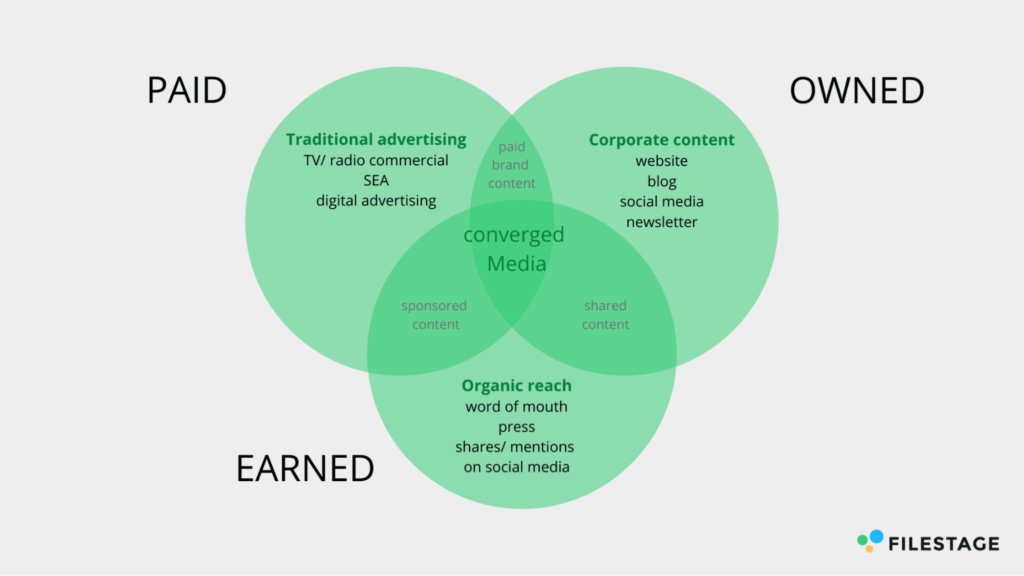
- Paid media refers to all media outlets, which need to be paid to be used. This includes a paid placement of print ads in local newspapers, radio, and TV commercials or social media posts, just to name a few. With the large number of choices available, media planning strategies are more important than ever.
- Owned media includes all outlets, which are under the direct control of the company or media planner. This might include the company website, own blogs, newsletters, catalogs and all other media channels owned by the company. If you are able to attract a huge followership for your owned media, you will be able to significantly reduce your marketing budget.
- Earned media is public exposure, which does not stem from paid media. Earned media is word-of-mouth on the highest level, as people are willing to talk about your brand by their own conviction, because they like your services and products. It is usually closely related to your owned media, as well as the brand awareness of your company.
What are the steps in media planning?
The following sections describe how media planners can create the media plan, from start to finish. If you follow these guidelines, your advertising strategy is much more likely to produce the desired outcomes.

1. Do some market research
Proper market research is the basis of every good media plan. Before designing innovative strategies, you need to know how your products or services compare to those of your competitors.
Therefore, marketers begin with thorough market research, which covers the entire product and marketing landscape. Check your competitors’ campaigns and brand awareness, to find valuable marketing niches for your intended audience and new potential customers.
2. Define your goals
The foundation of any great media plan is to have clear goals and objectives.
Defining unambiguous goals and objectives will help you answer important questions along the way and make strategic choices that will move you closer to your goals. It’s important that those objectives are SMART: specific, measurable, achievable, realistic, and timely.
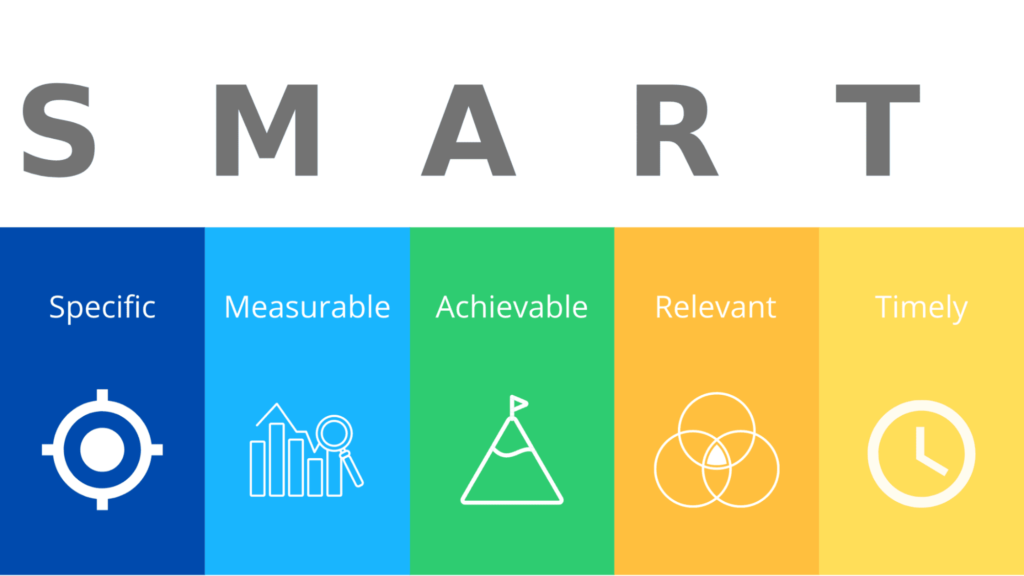
Your goals should answer high-level strategic questions, such as:
- Do you want to boost brand awareness and/or secure more conversions?
- Which buyer personas will you target with your campaign?
- Will you focus predominantly on print or digital channels?
- How will you measure the success of your campaign?
3. Set budget limits
Budgeting is another reason why a media planner needs to create a media plan. Specific budgeting tools can help to get an overview of all costs related to your media strategy.
A media buyer usually sends out requests for quotations to individual media outlets or determines a budget for paid ads on social media.
Depending on the size of your project, budgeting can take a huge chunk of your time, considering there is a lot of stakeholder management involved, as a lot of people need to approve your budgeting plan.
Further, make sure not to spend your entire budget, but keep an emergency reserve, in case unexpected expenses arise.
4. Create your media plan
Once the preliminary steps are complete, it is time to create your customized media plan. This part is all about designing great strategies, which take into account the findings of your customer research, as well as your goals and objectives while staying within your proposed budget.
Define your audience and buyer persona
Now that you’ve outlined the clear goals of your media plan, you’ll also need to define your target audience carefully. You probably already know your target market. However, you still need to conduct research, in order to find the ideal target audience for your proposed advertising strategy.
A clear description of your target audience will help you to understand their motivations and how you can reach them. Ask yourself, whether your intended audience consists of specific sub-segments of the overall target market, as this will determine the right means of communication.
Creating buyer personas or analyzing data through tools, such as Google Analytics, can help you better understand your target audience, in terms of personal interests and preferences.
Here’s a checklist to identify the target audience for your campaign.
Intent to purchase:
- High
- Low
Demographics:
- Age
- Gender
- Income
- Occupation
- Location
Type of campaign:
- B2B
- B2C
Media habits:
- Newspapers
- Magazines
- Mobile
- Desktop
- Social channels
To help you get started, we’ve created a free buyer persona template you can use:
Here’s an example of a buyer persona created with our template:
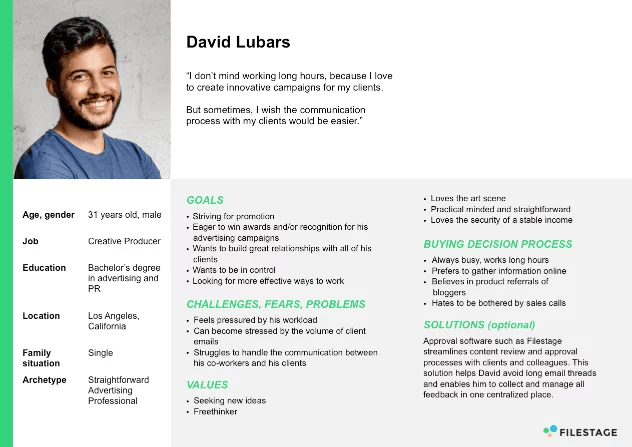
Select relevant media channels
The choice of the right media outlet depends, to a huge degree, on your target customers and overall media strategy. You can choose between traditional advertising media, such as magazines, newspapers, radio, billboards, and television, or make use of new media, such as social media platforms, influencer marketing, search engines, or programmatic advertising, just to name a few.
In today’s day and age, most media campaigns use a mixed channel approach, which combines several of the aforementioned marketing channels.
In order to create ad campaigns that work, you need to make sure your target audience uses these channels. This is one of the most important aspects of thorough media planning.
Therefore, during your market research, you should already be anticipating what media outlets your target audience and individual segments prefer. Further, you might consider slightly adapting your overall marketing strategy, according to each media channel.
Important factors to consider before selecting media outlets
Media buyers are spoilt for choice when it comes to media outlets. To decide which ad space to choose, you should consider factors, such as:
Reach
No matter what outlet you choose, reaching your target audience is one of the most important considerations. A targeted direct mail campaign might even have more impact than an expensive TV campaign. Therefore, make sure to define reach in terms of your target market, instead of the entire audience of the respective outlet.
Frequency
Frequency planning is a science all of its own. You need to make sure to find the sweet spot between the right frequency per outlet while keeping the budget as low as possible. As studies show, frequency contributes to purchase intent. Make sure to inform yourself how much customer engagement you need, to reach maximum buy intent and raise brand awareness.
Cost per thousand
Brand planners can easily assess the costs of their social media and online campaigns in advance. Cost per thousand (CPM) or cost per mille is the price of 1,000 impressions on a webpage or social media outlet. CPM makes it easy to plan and budget your campaign accordingly.
Cost per point
Seasoned media buyers of TV campaigns will know this ratio. Cost per point (CPP) is a ratio that describes the costs of one rating point, or in other words, 1% of the population within that specific market. The ratio can also be used for other outlets, such as online banners on specific web pages. One great advantage of this ratio is that you can compare the costs of different outlets with each other.
Impact
No matter whether you have reduced your costs or maxed out your reach, it is the impact of your commercial that matters most. Does your campaign have the potential to turn viewers into customers? The better the impact, the more customers you will generate. A widely-accepted KPI for impact is the conversion rate.
Define the budget for each channel
After the costs of each relevant outlet are clear, the media planner works on setting a budget for each channel. The budget needs to be allocated according to the anticipated impact of your campaign. After these steps are complete, you can finally enter the next stage of the planning phase and define the timeline.
Define a timeline for your media campaigns
No matter what campaign you are planning, you need to define a timeline and communicate it to all stakeholders involved. To save time, it is recommended that you use planning tools to create Gantt charts or similar timetables. Make sure you divide your projects into achievable milestones.

Project or marketing managers tend to be overconfident when it comes to allocating the timeframes for each milestone. Therefore, you should add a time buffer to each milestone, in case something unexpected comes up.
When you have finished your timeline, you need to discuss it with all the relevant stakeholders involved. Once an agreement is reached, you can specify the content of your campaign.
Supercharge your media reviews
Share, review, and approve all your content in one place with Filestage.
Plan your media content
Now that you have a clear idea of what you hope to achieve, and whom you’re going to target, it’s time to plan the content that you’ll have to create for each campaign and each channel.
You’ll need to make strategic and data-backed decisions, to create marketing collateral that will catch the eye of your target audience, resonate deeply with them, and inspire them to act.
To make sure that you achieve this, you should create detailed creative briefs, which should describe the following critical information:
- The purpose of the marketing collateral
- The tone and messaging that should be used
- Important background information
Once the content has been created, it’s important to share it with relevant stakeholders to get feedback and final approval.
To make this process as efficient as possible for everybody involved, we recommend using online proofing software like Filestage.
This tool enables you to upload your content on a centralized platform, where you can share it with all stakeholders who need to be involved. This way, invited reviewers can easily access the content and leave clear and precise feedback directly on the file, to improve quality and ensure brand compliance.
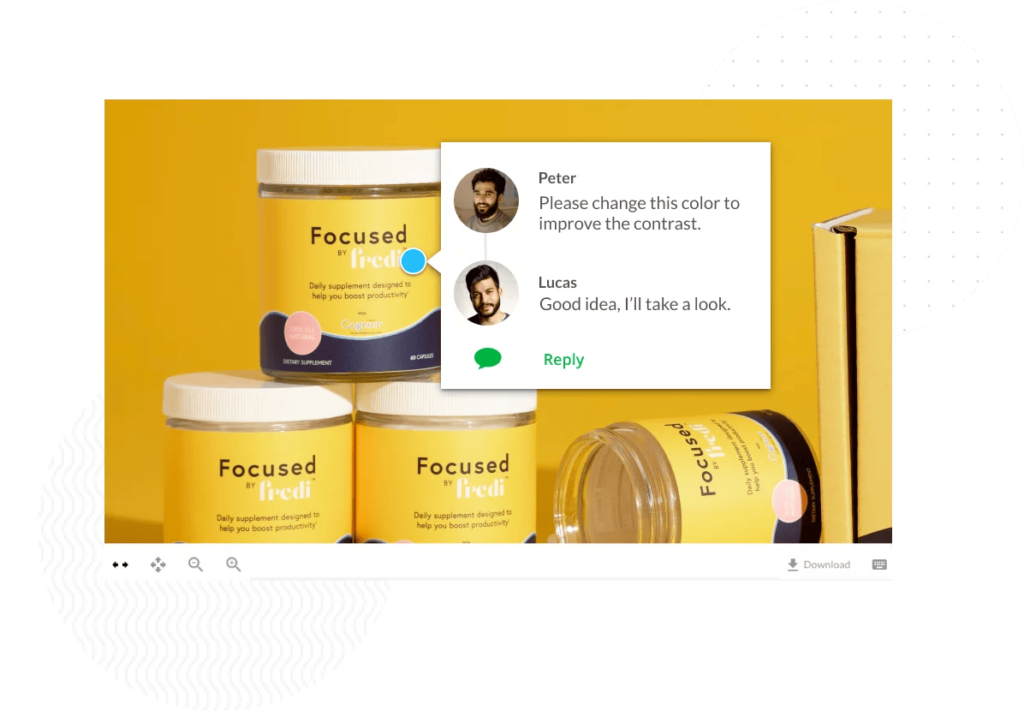
Also, automatic reminders ensure that everyone leaves feedback or approvals on time. Therefore, online proofing tools help you save valuable time, ensure that projects stay on time, and create your best work.
5. Launch your media campaigns
After you have finished planning your campaign and discussing the milestones, media channels and content with all stakeholders involved, it is time to set your plan in motion.
A solid timeline serves as the best guide through the launch phase. Depending on the scope of your media plan, the launch phase can take several days and even weeks, until you have published your content throughout all channels.
If your launch phase takes a considerable amount of time, it is recommended that you check results regularly and leave enough room to make necessary adjustments. After the launch phase, you need to monitor your most important KPIs on a regular basis.
6. Measure and evaluate your results
The KPIs that you established during the planning phase serve as a benchmark of whether or not your project was successful. Depending on the project, the KPIs can vary significantly. From more website traffic and leads to customer conversions – make sure to establish KPIs to measure and communicate your results.
KPIs can also give you the necessary input to think about improvements for the next project and make the outcomes comparable to similar projects. Once you have established all necessary steps, the next marketing campaign will already work much smoother.
Seven actionable best practices for your media planning strategy
Now that we have outlined the media planning process, let’s take a look at seven actionable tips and tricks that you can use along the way, to get the best possible results.
1. Develop a strong measurement strategy
You’ll need to put a strong focus on measurement, if you want to get the maximum value from your media planning activities. With accurate measurements, you’ll be able to unlock new insights and gain a deeper understanding of what works for your business.
This presentation from Dow Jones Insight shows you how to measure the effectiveness of your media strategy.

The presentation provides lots of interesting food for thought, concerning which media you need to track and how.
2. Ensure cross-channel consistency
Statistics from Demand Metric suggest that consistent brands are 3.5 times more likely to enjoy better brand visibility than other, more inconsistent, brands.
This is why it’s critical that you review and approve your collateral meticulously. By doing so, you’ll be better able to ensure consistency, wherever your brand appears. This is particularly important, if you operate cross-channel campaigns in different formats.
3. Polish your core materials
Media planning is carried out to attract new audiences to your business. Therefore, it’s important that, if you successfully attract a new visitor to your website or business, you’re able to offer a consistent and satisfactory experience.
Before you launch a significant media push, audit your existing core materials to make sure they’re up to scratch. For instance, this might mean checking your website is working flawlessly, so it can handle a surge in demand.
4. Create dedicated landing pages
Landing pages are a great way to drive conversions and capitalize on the new traffic you generate from your media planning activities.
Using landing pages means you can create cohesive campaigns and customer journeys. Imagine that you create a TV spot, in celebration of the Christmas holidays. You could divert that traffic to a specific landing page that uses the same messaging.
Landing pages are also very easy to monitor in terms of performance and, in turn, that will give you a full picture of your campaign’s performance.
5. Maintain a swipe file
If your media planning is going to be worth it, you’ll need to create amazing marketing collaterals that leap off the screen or page. There are some really talented creative teams out there, so you’re up against stiff competition.
This is why you should maintain a swipe file – a collection of tested and proven ads. If you’re ever struggling with a new campaign idea or a clever tagline, just call up your swipe file for inspiration.
Check out swipefile.com for some awesome examples that you can quickly filter to get great inspiration.
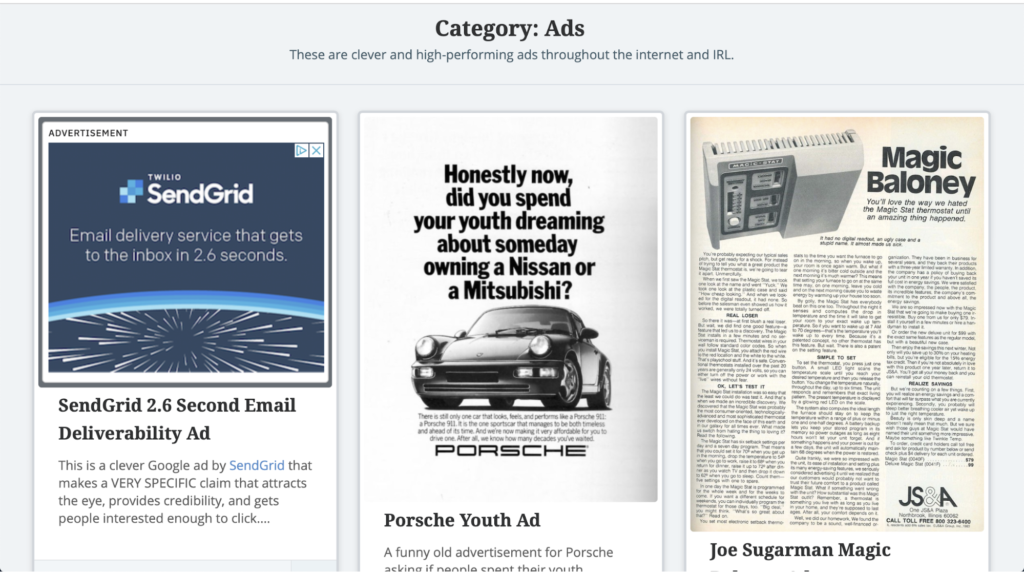
6. Maintain great relationships
Over the course of the media planning process, there’s a good chance you’ll speak with sellers at different magazines, newspapers, ad networks, and more.
Be sure to maintain good relationships with these people. They can help you to stay on top of industry trends and provide you with advice. Who knows, you might also secure some discounts and favorable terms for your next campaign!
7. Try new things
Given that media planning can be a complex and expensive task, businesses often fall into the trap of playing it safe. This might mean using the same old CTAs and messaging, over and over again.
If you feel your results are becoming a little flat, you might want to try something new and shake things up. Some businesses set aside a small portion of their advertising budget to try new things and to unlock new avenues. It’s not a bad idea!
Three media planning templates you can use to get started
Make your media planning process faster and more effective, by using the right media planning template.
Here are five great media planning templates you can use to get started.
1. Media planning template: Slidebean
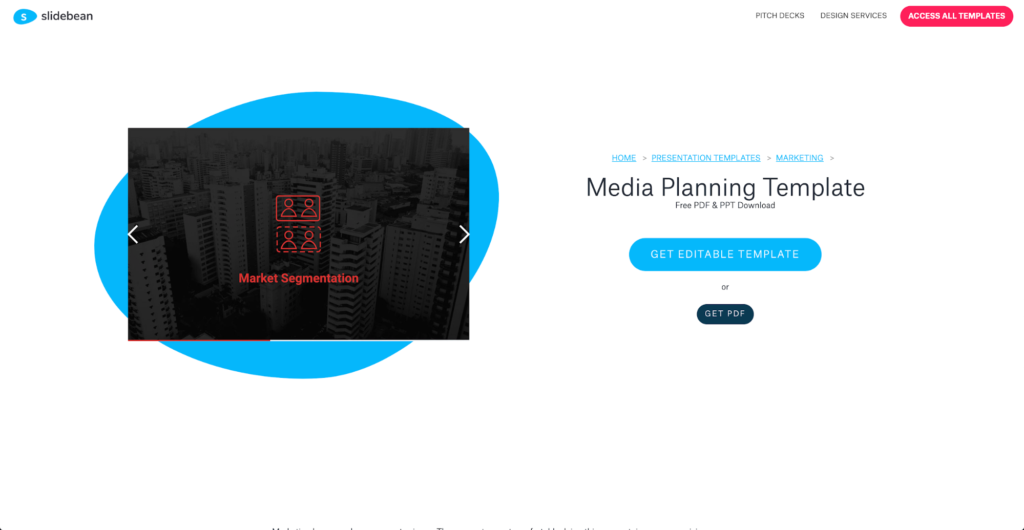
Slidebean has put together a really stunning media planning template you can use to stay on top of your media planning. This is an editable template, which you can quickly adjust to meet your needs and to cover all of the key areas within your media plan.
Download the media planning template here.
2. Free Paid Media Template – HubSpot
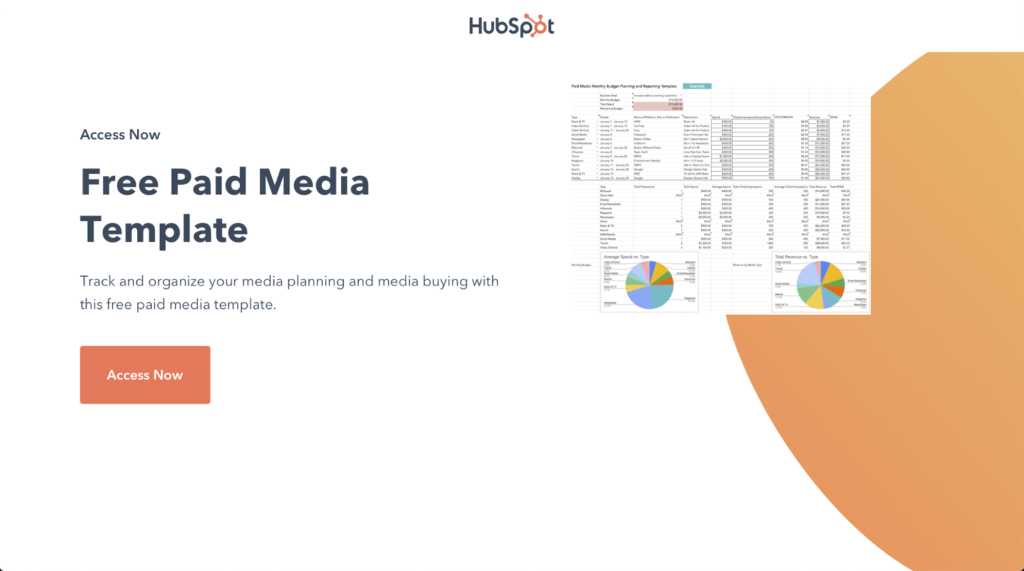
This great free paid media template, from HubSpot, helps you track and organize your media planning and media buying in one location. The sophisticated template makes it simple to track your expenses and ROI, for full visibility.
Access the free paid media template here.
3. Digital media plan outline – SampleTemplates
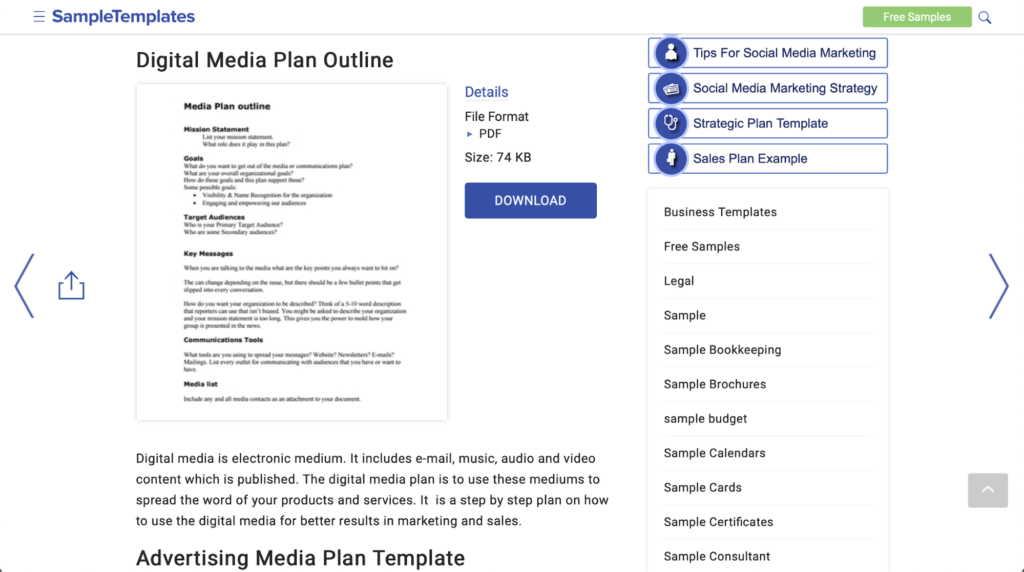
This great template, from SampleTemplates, helps you to master your digital media planning. It gives you lots of space to outline your key areas, such as the vital messages you’ll share, the goals you have, and whom you will target.
Download the plan here.
Top media planning software to help with your process
By now, we’ve got everything pretty much in place. But which media planning software should you use to help you through the process?
Here’s a look at the best media planning tools on the market.
Content planning
As we touched on earlier, it’s critical to invest in great content planning tools that help you stay organized. Here are some of the best.
Google Sheets
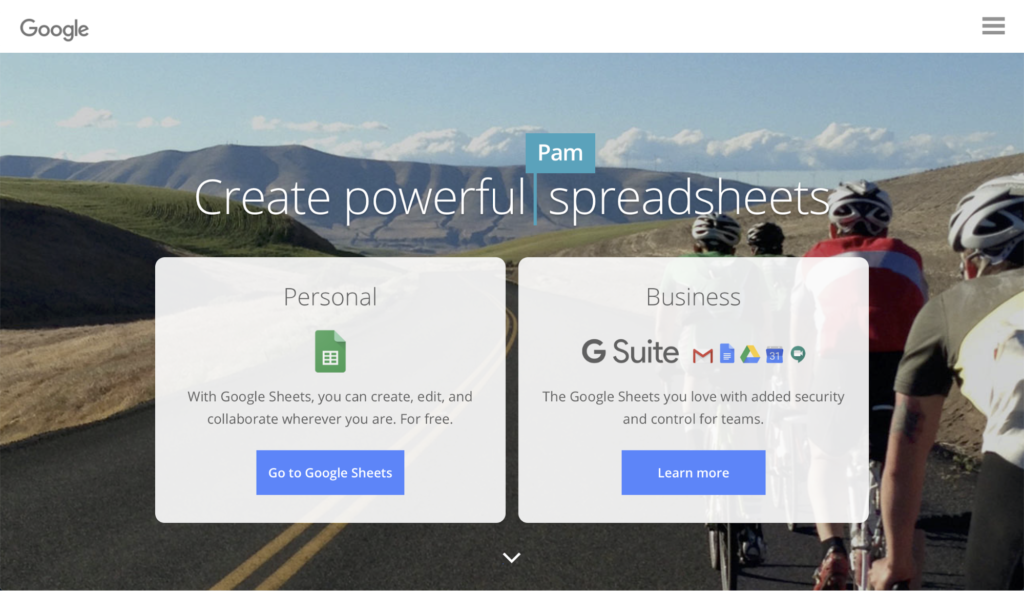
Google Sheets is a highly versatile tool that’s very popular within businesses that use the G Suite. You can use Google Sheets to spin up content planning documents easily, and then share them widely with your team.
You’ll find all of the key spreadsheet functionality on offer here, and it’s even possible to download your Sheet documents into Excel file formats, if necessary.
Asana
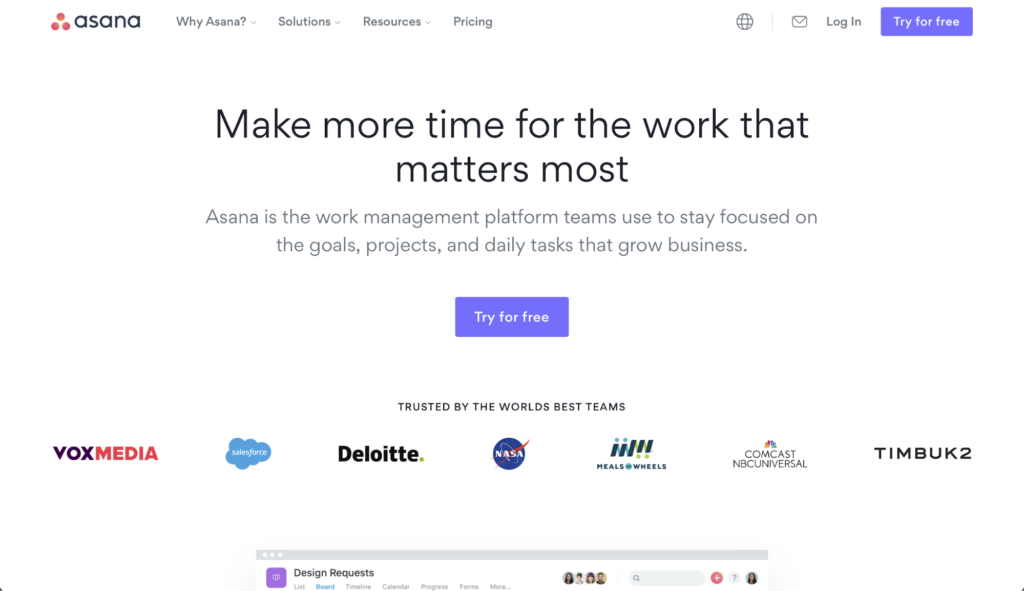
Asana is a work management platform that frees up creative teams to focus on what matters most. This is primarily a project management platform, but there are lots of different project views you can use to organize and monitor your media planning.
It’s also possible to invite team members from across your organization and to keep everybody aligned in the creation of your collateral.
Content creation
Content planning is just one part of the puzzle – now you’ve got to think about the actual creation of your content. Here are some tools you’ll want to use.
Canva
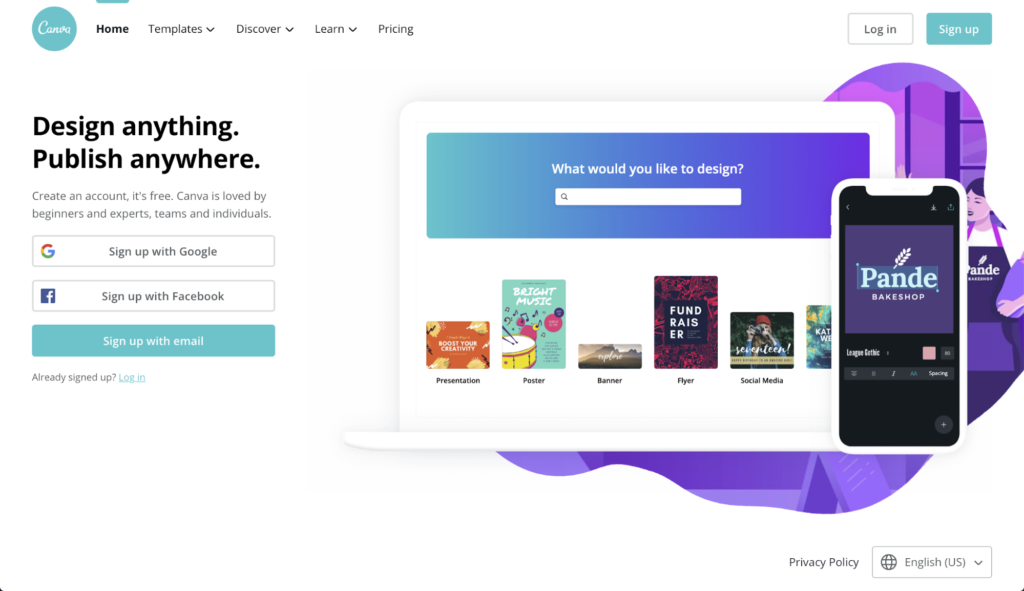
Canva is a great cloud-based design platform, which can even be accessed on the move. Canva offers a huge range of templates and tools, so creative professionals can create attractive and effective designs.
It makes it simple for marketers to share and organize their designs, as well, giving them the power to work efficiently.
Venngage
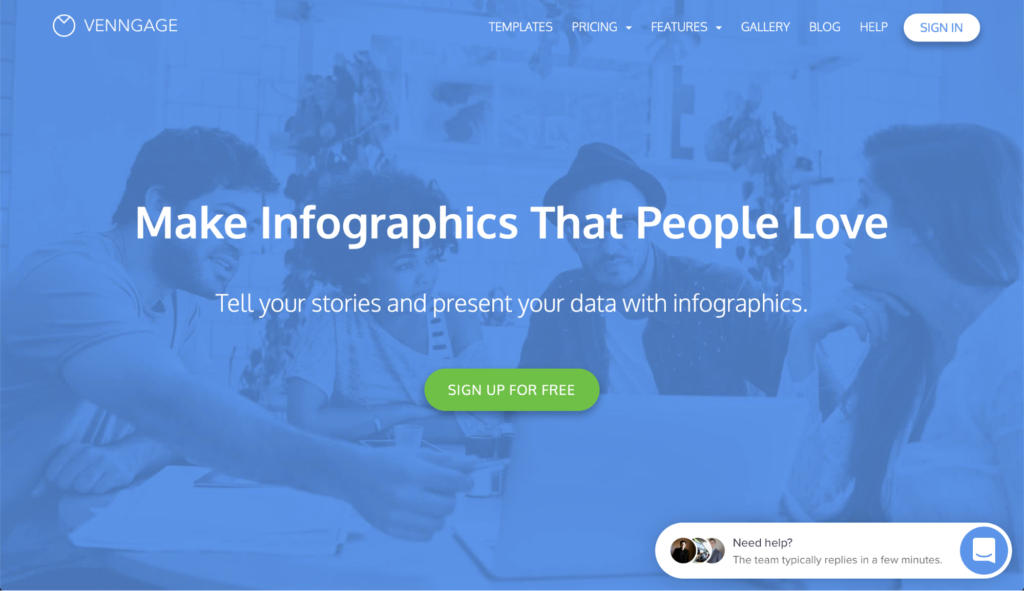
Venngage is a tool that helps creative professionals create engaging and data-rich infographics quickly. It also offers a range of attractive templates that marketers can use to get started right away.
Venngage is loved for its intuitive approach, and it’s really surprising how marketers, with only a basic knowledge of design, can create something truly special.
Content review and approval
Once you have created your collateral, it’s critical to secure approval from the key members in your team. Below, you’ll find a selection of the best content review and approval tools on the market.
Filestage
Filestage is an online review and approval tool that makes it easy for creative teams to share their work and collect feedback from stakeholders in one place.
After uploading the image, video, document, or any other file type, the invited reviewers can add comments and annotations directly on the file, to leave clear and precise feedback.
This input helps the designers and video editors to create their best work and specify every content piece for each channel, while making sure they match quality, branding, and compliance standards.
Conclusion
It should be clear by now that media planning is one of the most important processes for each marketing project. The planning phase helps you better understand your customers and find ways to present your products and services, even in a competitive market.
Make sure to spend the necessary time and resources to establish a bulletproof media plan that leaves enough room for adjustments during each milestone. If you follow all the steps presented in this article, you are already on the right track to create a media campaign that brings the desired results and leaves a long-lasting impact on your customers.

